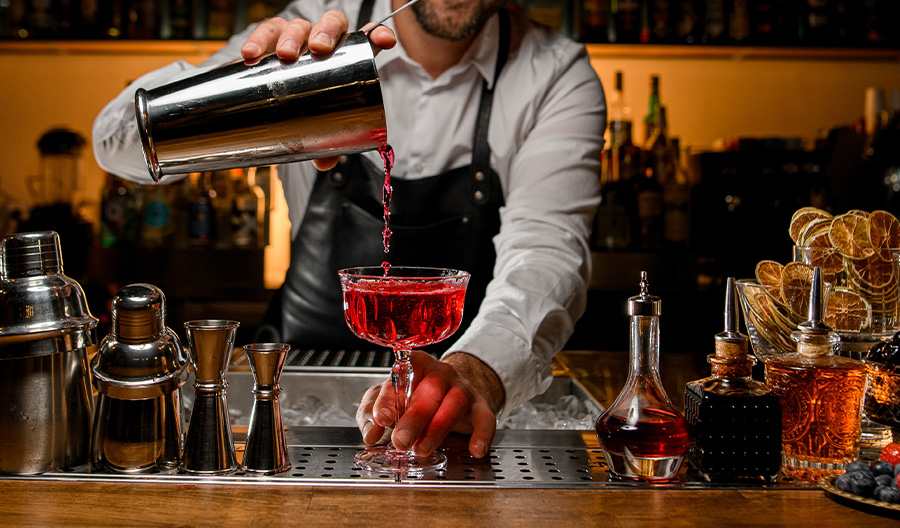The Champs-Élysées is a classic cocktail that consists of cognac, green herbal liqueur, lemon juice, simple syrup, and bitters. Named after the famous Paris avenue, it’s essentially a riff on the Sidecar that calls for green liqueur rather than orange liqueur.
The cocktail was first popularized in Europe, as the United States was still in the midst of Prohibition. The drink began to appear in cocktail books around 1925, when it was featured in Drinks—Long and Short by Nina Toye & A. H. Adair. In 1930, its profile grew further when it was included in Harry Craddock’s The Savoy Cocktail Book, which dialed up the recipe to punch proportions, meant to serve six.
Despite these early 20th-century appearances, little is known about who first formulated the Champs-Élysées cocktail. Whatever the drink’s origins, it worked to bring attention to the mixability of French herbal liqueurs. It also contributed to the development of the sour category of drinks through bartender experimentation of previous iterations like the Sidecar and its forebearer, the Brandy Crusta.
What Makes the Champs-Élysées Work
While the Sidecar uses orange liqueur as its sweetener, the Champs-Élysées employs an aromatic green French herbal liqueur. When it’s combined with aromatic bitters, what you get is a deeper, more earthy and woodsy cocktail in the sour profile, as opposed to the Sidecar’s juicier, fruit-forward notes.

This makes the Champs-Élysées a fantastic alternative for those seeking a sour style of cocktail while minimizing the potential for it to turn into a juice bomb. Lemon juice provides the needed acidity to balance the sweet elements, but the aromatics of the other ingredients create something that may be appealing to those who usually favor more spirit-forward cocktails.
The drink is sweetened with both the liqueur and neutral simple syrup, as the former ingredient would overpower the drink. Though this recipe calls for a specific herbal liqueur, those who wish for a more subtle touch may opt for the milder yellow version, which will come across as less perfumy in the final mix and has a slightly lower alcohol content.
Worth noting, both styles of French herbal liqueur can be difficult to source at times, as production of the spirits is limited, and demand can often skyrocket. While there are no direct replacements for the classic liqueur, there are many newer alternatives that can work within the below specifications for a slightly different but delicious drink.
Ingredients
2 ounces Cognac
3/4 ounce lemon juice, freshly squeezed
1/2 ounce green French herbal liqueur
1/4 ounce simple syrup
2 dashes aromatic bitters
Garnish: lemon twist
Steps
Combine all ingredients except garnish in a cocktail shaker filled with ice.
Shake for 15–20 seconds until well chilled.
Strain into a chilled coupe or Nick & Nora glass.
Garnish with a lemon twist.

